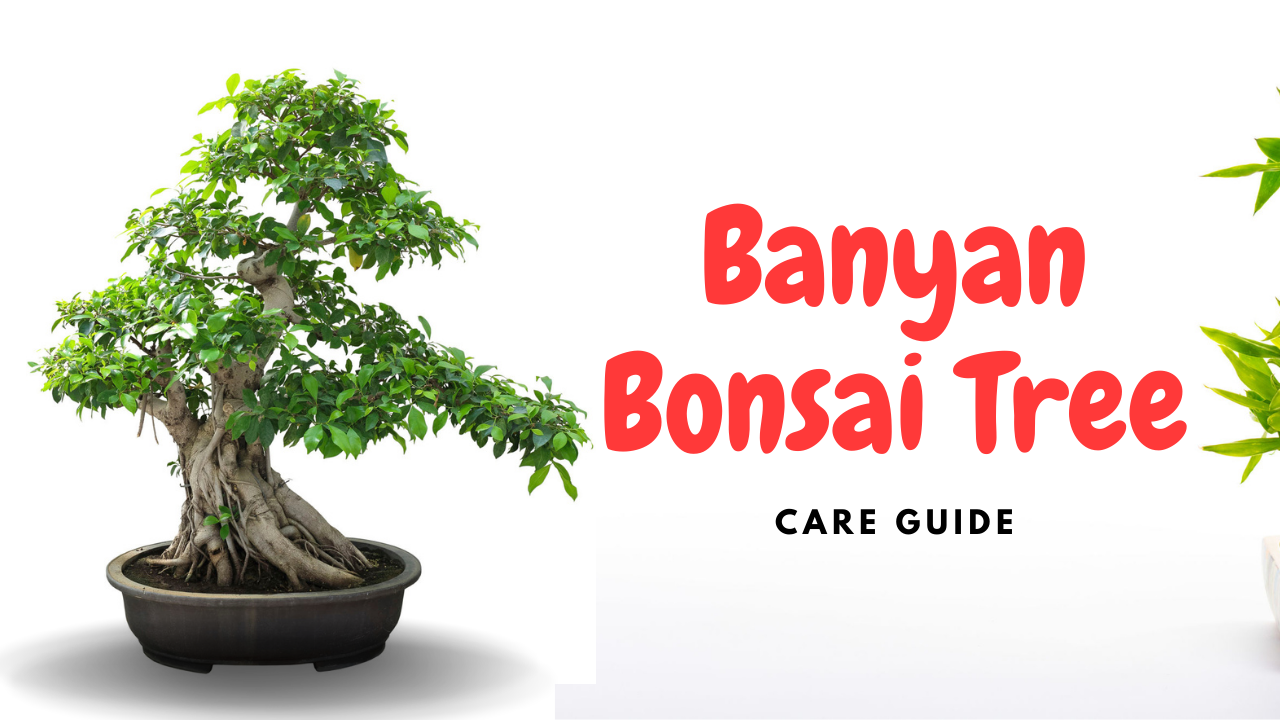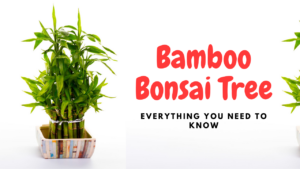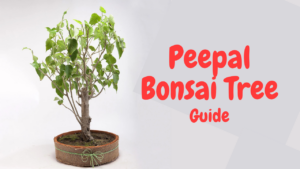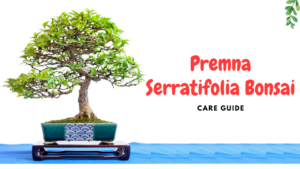In this article, we will guide you on the essential things you need to know about banyan tree bonsai care.
But before that, Did you know the Banyan tree is the national tree of India?
Yes, it is! Banyan bonsai care is easy, and it flourishes well, so a new plant parent can also grow its mystical bonsai at home.
It has an enticing look due to its small and compact size. The resilient structure of the plant, and the strange views supplied by aerial roots, make caring for it a very satisfying experience for the homeowner.
We will guide you in every aspect on how well you can manage banyan bonsai care.
Buy Banyan Bonsai Plants
- Original price was: ₹1,200.₹1,080Current price is: ₹1,080.
Bonsai plants delivery online: Bonsai plants delivery online offers a convenient way to receive your new plant right to your doorstep. Many online sellers offer shipping options, with some even offering free delivery on orders over a certain amount. When ordering bonsai plants online, be sure to check the seller’s shipping policy and estimated delivery times.
Banyan Bonsai Tree Care
Banyan Bonsai care is easy, and it won’t give you much trouble. Yet, you need to consider a few guidelines for your banyan tree bonsai care.
Location
People are often confused about the location of the banyan bonsai. You can grow your bonsai year-round indoors, near a sunny window, or outdoors in warmer areas. They prefer morning sunshine to afternoon sunlight, burning the delicate leaves.
Banyan bonsai trees dislike cold draughts and are irritated by frequent changes. You should take baby steps while growing your bonsai. Maintain humidity levels by placing a humidity tray under your banyan bonsai tree. You should strictly avoid freezing temperatures while selecting a location when growing ficus outdoors.
Ideal soil mix for banyan tree bonsai:
Your soil selection will determine the growth habit and the health of a banyan bonsai. A soil mixture that has the perfect combination of water retention, drainage, and aeration capabilities is ideal for banyan tree bonsai. From my personal experience, a mixture of peat moss, perlite, and coarse sand in equal portions is ideal in terms of drainage, aeration, and water retention. But, if you can’t prepare the soil, at least make sure that your soil drains well.
Check your soil regularly, especially after you water it. You can replenish it if needed. Just do not let it get waterlogged.
Watering
Bonsai trees live in little pots, and their environment dries up much faster than plants in the ground or larger pots, thus watering is crucial for the banyan tree bonsai care. You should water your banyan bonsai tree at appropriate intervals regularly. It is critical to water the tree’s roots.
Check the soil layer; if it is wet, your tree doesn’t require water. However, if it is dry, it needs its fuel. It can be challenging to strike a balance between not enough water and too much water, but it is critical in banyan tree bonsai care. When it needs water, water it thoroughly and deeply, then allow it a chance to recover its breath before watering again.
Placing the entire pot in a sink of water an inch or two deep and allowing the water to infiltrate through the holes in the bottom is an old bonsai watering trick.
You can also use a spraying bottle to mist the area now and then. It relieves the strain on the roots, especially when the weather is hot and dry.
Fertilizing
Plants require more nutrients to thrive throughout the growing season thus, fertilizing a bonsai is critical to its health and for banyan tree bonsai care. It’s time to start feeding your bonsai when new growth appears in the spring. Use a half-strength organic liquid fertilizer or a half-strength chemical fertilizer. During the growing season, fertilize every two weeks, and once a month in the winter. Fertilizing your bonsai is very important in banyan bonsai care as it responds fast and passionately.
Note for Banyan Bonsai Care: Ensure to keep in mind that excessively harsh chemicals can cause our bonsai tree to burn, so be cautious when using them.
Pruning
As it is a fast-growing plant, banyan bonsai tree pruning is necessary. After your bonsai tree has grown 6-10 leaves, prune them back to 2-4 leaves. You can prune your banyan tree any time of the year, though heavy pruning is preferred in the spring. During the growing season, banyan tree bonsai care is a must and ensures to keep the new growth clipped down.
When you cut your bonsai, it bleeds a milky, white sap latex that you can notice. This latex is quick to dry and works well as a sealer. When trimming back smaller branches, leave a short stub that will dry out over the next few days. Then simply remove the dry branch, which will mend without leaving visible scars.
Note for banyan bonsai tree pruning:
As mentioned earlier, while you will prune your bonsai, you can notice a milky sap containing latex. Because this can irritate some people’s skin, it’s a good idea to use gloves when working.
Wiring
Bonsai trees are trained into various forms and styles using good wiring techniques. Banyan tree bonsai care involves holding the branch in the desired place and using the thinnest wire you can find. For banyan bonsai care, wrap the wire around your bonsai in a gentle manner, and the direction of the branch’s bend. Ensure to prevent it from unwinding and scarring. Start with the trunk and work your way down to the branch.
It takes roughly six weeks to train a branch to maintain its shape without the use of wires. When it’s time to cut the wires, be careful not to unwind them, as this can cause the branch to break.
Note for Banyan tree bonsai care: Ensure not to wire your bonsai just after repotting.
If the wire is wrapped too tightly, it can cause visible scars on your bonsai tree. Wrap just tight enough to complete the task.
Repotting
Banyan tree bonsai care includes replacing the tree’s pot after a certain period has passed. Everything, including trees, requires some change, as it is a basic law of life. Bonsai are kept in small, shallow pots on purpose, yet you need to replant them now and then.
Every two years in the spring, repot your banyan bonsai with a basic soil mix in a little larger pot than the one it was in. You must move the plant from one container to another with extreme caution to avoid damaging the roots.
Note for Banyan bonsai care: When repotting your banyan tree bonsai, a fair rule of thumb is that if you can take out the root in one piece, and it’s the same shape as the pot, it’s perfect.
Insects and Diseases
The most common insect that attacks a banyan bonsai is scale. Brown or black bumps on the branches usually demonstrate the existence of scale. These insects are hidden underneath a waxy shell in these bumps. There may also be a sticky fluid that discolors the branches of your bonsai tree.
Mites are common in the banyan tree. People may witness severe infestations that leave “spider webs” on the tips of branches and yellow leaves all over the tree. In these situations, banyan bonsai care is a need.
Mealybugs depict as whitish cottony spots at the bottom of the leaf, with some infestations concentrating on the roots. You can only witness them only during repotting. The best practice of banyan bonsai tree care is to remove them.
Aphids are another common pest that can infest your banyan tree. Unlike many other pests, they are easy to locate, as they usually crowd on the outer side of the leaves. Aphids are tiny, 1/16- to 1/8-inch-long, pear-shaped insects. They crowd on the leaves and suck the sap of it, which leaves tiny spots on it. They themselves only harm ornamentally, but while sucking the juice of the leaves they leave sugary secrete, which attracts other predators like ants and also creates molds.
Insecticides containing Malathion are harmful. Oil is ineffective for treating root mealies. You may need systemic poisoning for treating it.
Excessive dampness or dryness is the most common cause of your banyan tree losing leaves for no apparent reason. If your banyan bonsai tree came in contact with a rapid blast of cold air or exposure to bright sunlight, on the other hand, having the same effect. Ensure that your banyan tree bonsai care includes maintaining a warm environment for your bonsai, and allowing the soil to dry up before watering is a need. The tree will grow its leaves in 3-4 weeks.
Spots on banyan leaves are quite common and they are mainly caused by fungal infections. Here are the various kinds of spots to look out for when checking your tree for possible infection:
WHITE SPOTS ON BANYAN BONSAI LEAVES:
White spots, powdery film, or mold on banyan leaves are a symptom of a fungal disease, most typically seen on broadleaf banyan tree species. While it’s not something to be too worried about, you should tend it fast as it can result in your tree failing or losing its leaves which in turn can influence the general health of your tree.
BLACK SPOTS ON BANYAN BONSAI LEAVES:
Black spots on the leaves of your banyan bonsai in the majority of circumstances mean that your tree is suffering from a fungal disease. If left and ignored for a longer period, what initiates as tiny black spots can momentarily develop into patches and potentially will spread over the whole leaf and then the tree.
BROWN SPOTS ON BANYAN BONSAI LEAVES:
Brown spots underneath the leaves can usually be a symptom of rust – it’s another common fungus disease that can have a fetal effect on your banyan bonsai. This fungus resembles rusted metal, which is where it earns its name from. If ignored and untreated it can extend over to the stems and trunks and at one point it will cover the whole bonsai in a rusty-looking powder.
The first and foremost thing to do when you detect any symptoms of fungus on your bonsai is to separate the infected tree from any other trees to stop the chance of cross-contamination. The best method to get freed of any kind of fungal disease is by snipping away the infected leaves and treating the rest of the tree with a fungicide.
Frequently Asked Questions
Is it challenging to care for a banyan bonsai tree?
The simple answer is No! Most other bonsai species are more challenging to manage than banyan. It adapts to any climate, requires less light, and is less picky when it comes to watering.
Does banyan tree bonsai care include any special measures when growing indoors?
When growing the banyan bonsai indoors, avoid placing it near an air conditioner or heating vent. It prefers a lot of humidity, thus placing it next to them will deprive it.
Does banyan bonsai care include watering regularly?
Yes, it is recommended to water it regularly and immediately after the soil has become dry. The banyan bonsai prefers a humid climate and will only require misting if the weather becomes dry. Aside from that, banyan tree bonsai care includes placing the pot on a humidity plate, which will help to keep the humidity level around the plant at an ideal level.
Conclusion
In this article, we have covered everything you need to know about banyan tree bonsai care. Some essential things you need to consider while banyan bonsai care is location, watering, and pruning.
With its enticing foliage and roots, the tree will enhance the beauty of your home. It brings the lush, evergreen tropical forests into your home and forms a striking centerpiece. So, when are you planning to bring this masterpiece to your home?








